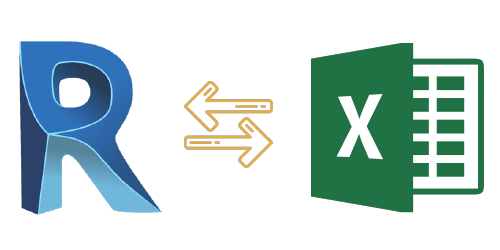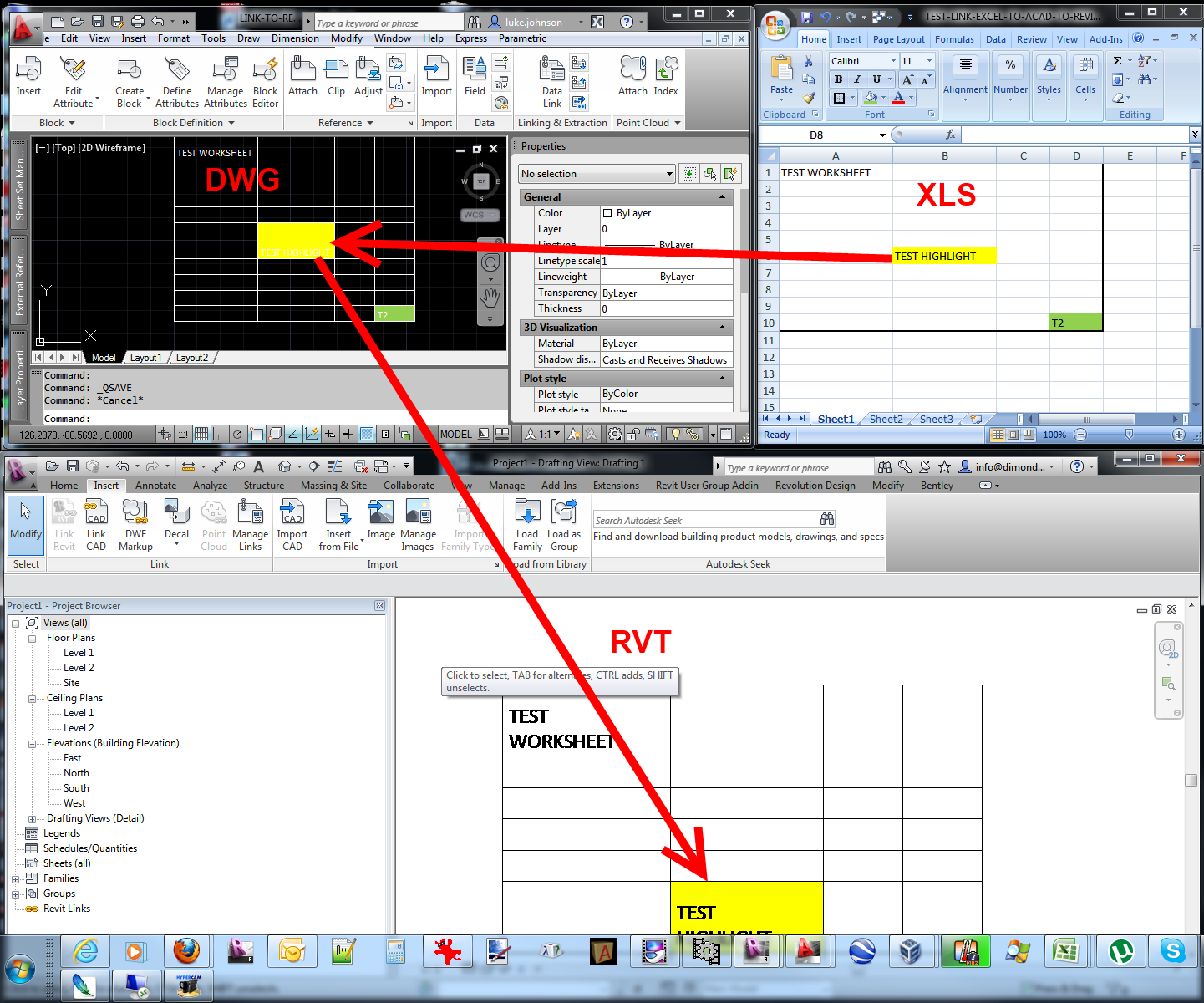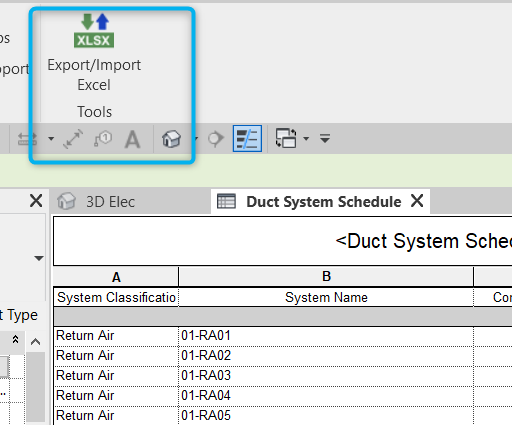Import Excel into Revit Seamlessly: A How-To Guide
Wiki Article
Excel-to-Revit: A Game-Changing Operations for Architectural Design - Introducing the Tricks
Introducing excel-to-revit, the game-changing operations that will certainly transform your style procedure. With excel-to-revit combination, you can streamline your building style, unlock performance, and make best use of collaboration within your group. Get all set to take your building layout to the next level with excel-to-revit!The Power of Excel-to-Revit Assimilation

Picture the convenience of being able to modify and update job data in Excel, and quickly see those changes shown in your Revit model. No more hands-on information access or tiresome updates. With Excel-to-Revit assimilation, you can save time and decrease mistakes by leveraging the power of Excel's features and formulas to immediately produce accurate information in Revit.
Not just does this assimilation boost effectiveness, yet it likewise boosts partnership amongst employee. You can quickly share Excel data with associates, that can after that import the data right into their Revit versions. This promotes a seamless exchange of information and makes certain that everyone is functioning with one of the most up-to-date information.

Improving Building Layout With Excel-To-Revit
Streamlining architectural design is made less complicated with making use of Excel-to-Revit (revit add ins). With this powerful integration, you can enhance your process and save beneficial time throughout the layout process. By leveraging the capabilities of Excel and Revit, you can seamlessly transfer information between the two systems, getting rid of the demand for hand-operated information access and decreasing the danger of mistakesExcel-to-Revit permits you to import and export information effortlessly, allowing you to easily upgrade and change your building styles. You can produce routines, determine amounts, and produce records in Excel, and after that transfer that information straight right into your Revit design. This integration makes sure that your design details is always up-to-date and integrated, eliminating the demand for manual updates and decreasing the opportunities of inconsistencies.
By utilizing Excel-to-Revit, you can also capitalize on the powerful computational capabilities of Excel. You can execute complicated estimations, examine data, and automate recurring jobs, all within Excel. With just a couple of clicks, you can import the results back right into Revit, allowing you to make educated design choices and optimize your architectural styles.
Unlocking Effectiveness: Checking Out the Excel-to-Revit Workflow
Maximize your efficiency by seamlessly incorporating Excel and Revit for a more reliable process. With the Excel-to-Revit operations, you can unlock a whole new degree of performance in your architectural style process. By utilizing the power of Excel's information management abilities and combining it with the flexibility and precision of Revit, you can improve your style procedure and conserve valuable time.One of the vital benefits of this combination is the capability to import and export data in between Excel and Revit. This suggests that you can quickly move task details, such as space timetables or material quantities, from one software to the other, getting rid of the requirement for hand-operated information entrance and reducing the possibilities of mistakes. You can likewise create custom-made formulas and estimations in Excel to automate repetitive tasks and execute complex computations, which can after that be seamlessly incorporated into your Revit versions.
Additionally, the Excel-to-Revit operations permits better sychronisation and collaboration between employee. With Excel working as a main information center, several staff member can work with different elements of the job concurrently, sharing and updating information in real-time. This not just enhances communication but also makes certain that everybody is collaborating revit plugins with one of the most up-to-date data, removing the risk of incongruities.
Optimizing Collaboration: Excel-to-Revit for Architectural Teams
By perfectly incorporating Excel and Revit, building teams can greatly enhance partnership and achieve much more reliable design outcomes. When utilizing this powerful workflow, you can quickly move data between Excel spreadsheets and Revit models, streamlining the design process and boosting interaction amongst team members.Additionally, by leveraging Excel's powerful calculation capabilities, you can perform complicated computations and evaluation on your style information, supplying valuable understandings and driving notified decision-making. This combination likewise allows you to export data from Revit to Excel, allowing you to produce comprehensive records, graphes, and graphs for presentations and analysis. This joint workflow promotes efficient interaction and coordination amongst group members, as Excel functions as a central hub for information monitoring and sharing.
Total, by accepting the Excel-to-Revit operations, architectural groups can accomplish higher levels of collaboration, effectiveness, and accuracy in their style process. import excel into revit. This assimilation equips groups to collaborate flawlessly, making sure that every person gets on the exact same page and contributing to the success of the project
Revealing the Secrets of Excel-to-Revit Assimilation

Among the keys of Excel-to-Revit combination is the capability to take advantage of the power of formulas and calculations in Excel to drive specifications and generate complicated geometries in Revit. You can link Excel spreadsheets to Revit families, allowing you to input information straight into the spread sheet and have it automatically upgrade in the Revit design. This streamlines the design process and ensures accuracy and uniformity throughout the job.
Another secret is the capacity to develop custom-made timetables and records in Excel, using information extracted from Revit. This allows you to assess and picture project information in a way that is not possible within Revit alone. You can conveniently produce quantity liftoffs, expense quotes, and project timelines, providing valuable understandings for decision-making and project administration.
Additionally, Excel-to-Revit combination enables efficient cooperation amongst employee. Numerous individuals can service the exact same Excel spread sheet all at once, making it simpler to work with and track changes. You can likewise use Excel's commenting function to provide feedback or connect layout revisions.
Conclusion
So there you have it, the tricks of excel-to-revit combination have been unveiled. This game-changing workflow has the power to streamline building design, unlock effectiveness, and maximize collaboration for architectural groups. By incorporating the power of Excel and Revit, architects can currently function a lot more effectively, save time, and produce better designs. So why wait? Begin including excel-to-revit integration right into your architectural style process today and change the means you function.With just a couple of clicks, you can import the outcomes back into Revit, permitting you to make enlightened layout choices and optimize your building layouts.
By utilizing the power of Excel's information monitoring capabilities and integrating it with the versatility and precision of Revit, you can enhance your design procedure and save important time.
By perfectly integrating Excel and Revit, building teams can substantially boost cooperation and accomplish more efficient style outcomes. When using this powerful process, you can conveniently move data between Excel spread sheets and Revit versions, streamlining the layout procedure and enhancing communication amongst group participants.Moreover, by leveraging Excel's effective calculation capabilities, you can execute complicated calculations and evaluation on your design data, supplying beneficial understandings and driving notified decision-making.
Report this wiki page